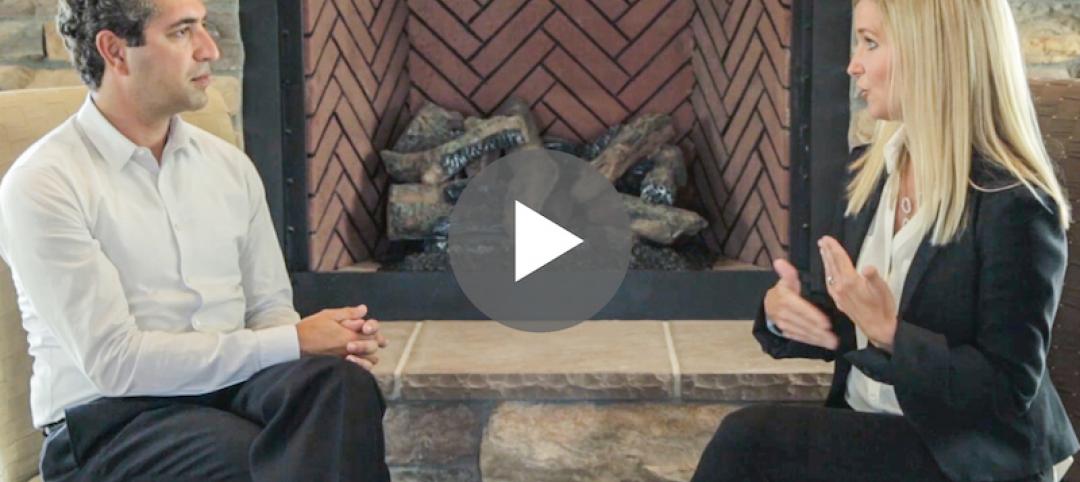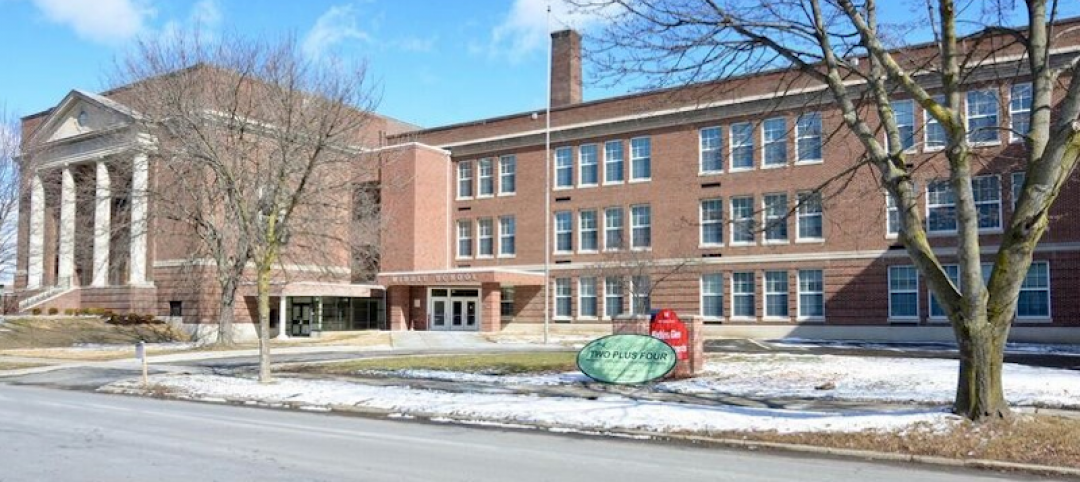A growing appetite for outdoor living spaces is fueling an expansion of outdoor kitchens on roof decks, terraces, and courtyards.
“In the last few years, we’ve seen an enormous increase in demand as high-end rental properties, condos, and townhomes take advantage of the indoor-outdoor living phenomenon,” said Mitch Slater, Founder/President, Danver Stainless Outdoor Kitchens (danver.com).
The design of these open-air amenity spaces has evolved from standalone grill stations to sophisticated meal preparation and dining environments that emphasize convenience and community. “These days, the goal is to get people to stay outside longer and have a great experience,” said Kristen Larkin, ASID, Associate Principal, FitzGerald Associates Architects, Chicago.
Although there’s no standard template for outdoor kitchens, designers and manufacturers we spoke with shared practical advice for ensuring these amenity spaces deliver safe, memorable experiences for residents and guests.
1. Design a simple, logical layout. L-shape, U-shape, and island layouts are common configurations for outdoor kitchens. Marieke Lacasse, ASLA, LEED AP BD+C, Principal at Seattle-based design firm GGLO, recommends locating them close to the pool area or party room to create a social hub and event space. “Outdoor kitchens are places to congregate around food, so it’s important to provide adequate food prep areas, sink space, and support surfaces,” she said.
‘Outdoor living is here to stay, so not having an outdoor kitchen really devalues your asset.’
—Marieke Lacasse, GGLO
Larkin likes to engage the management company that will maintain the space early in the design process, to ensure everyone’s goals are aligned. “I want to make sure any decisions I make on their behalf are in the long-term interests of the building owner,” she said.
2. Provide indoor-outdoor continuity. The growing popularity of sliding glass walls opens the door for outdoor kitchens to function as extensions of the interior environment. “Interior designers need to work closely with landscape architects to achieve design continuity between these areas,” said Jason Valentin, Associate IIDA, Interior Design Coordinator at Stantec.
Team collaboration extends to design details. “Don’t just think programmatically about how the spaces work together, but think also about the overall language of materiality such as patterns, colors, and metals,” said Lacasse. “Every little detail needs to be thought through to create a cohesive indoor-outdoor connection.”

Toni Wendel, Owner of Olde World Builders and Remodelers, chose Danver Stainless Outdoor Kitchens cabinetry with green powder-coat finish for this condo building in New Orleans’s historic Warehouse District. Photo: Chad Chenier Photography
3. Select durable, easy-to-maintain materials. “We push for sturdy, stable baseline construction materials,” said Larkin, who favors steel trellises over all-wood structures. She recommends easy-to-maintain surfaces such as stainless steel cabinetry and granite countertops. Powder-coated stainless steel cabinetry offers added protection against moisture damage. Powder coatings can also be colored, opening up design possibilities.
The inevitable spills and splatters from shared grills should be considered when selecting flooring materials. “We’ve learned to use darker pavers in front of barbecue spaces, because grease is more visible on lighter-colored pavers and they stain easily,” said GGLO’s Lacasse.
4. Emphasize safety and accessibility. To protect residents and guests from the potential hazards of open flames and hot surfaces, locate grills, ovens, and fire pit tables in sheltered environments away from high-wind areas—or use a flameless electric grill. All adjacent structures should use fire-resistant building materials, such as fire-treated wood or light-gauge aluminum frame.
Designers also must follow ADA accessibility requirements for kitchens: providing adequate clearance areas and adhering to surface height requirements for sinks, appliances, cabinets, countertops, and food prep areas.
5. Take local climate into consideration. In colder climates sinks, icemakers, and refrigerators that have outdoor plumbing need to be winterized. “If an outdoor sink isn’t feasible, it’s important to consider adjacencies—how far will a resident have to carry a dirty spatula from the grill to an indoor sink to clean it?” said Larkin.
Humid environments and extreme weather events pose their own problems. “In Miami, we need to specify marine-grade materials such as plywood and cement board as a substrate for the millwork and cabinetry,” said Stantec’s Valentin. “We wouldn’t specify a typical laminate that we might use in an interior space.”

Pappageorge Haymes Partners installed this rooftop outdoor kitchen suite at LUXE on Madison (P II), a four-story, 44-unit apartment community in Chicago’s West Loop. Fifield Development is the developer. Photo courtesy Pappageorge Haymes Partners
6. Use lighting to enhance the ambience. Because nighttime is prime time for grilling, effective lighting is essential for maximizing safety and functionality. Our experts recommend using subtle, indirect lighting strategies that meet local outdoor lighting code requirements while maintaining an ambience conducive to a relaxing night under the stars.
Wind can play havoc with decorative lighting fixtures. FitzGerald’s Larkin suggests using softer bounce lights and integrating the lighting into a trellis or overhead structure to make the space feel more intimate.
7. Offer cooking options. Multifamily developers are expanding their cooking repertoire to include electric cooktops, smokers, and pizza ovens. Manufacturers like Danver offer commercial-grade bartending stations and mobile F&B service carts.
Properties with space or budget constraints can still raise their game. Thor Kitchen (thorkitchen.com) offers a compact modular outdoor kitchen suite that has a gas grill, side burner, wood-burning pizza oven, refrigerator drawers, grill cabinet, sink cabinet, corner cabinet, and appliance cabinet. Danver’s Post and Panel System employs powder-coated stainless steel panels that ship flat and can be installed in the cabinetry even with the countertop in place.
Do outdoor kitchens enhance a property’s marketability? Yes, said GGLO’s Lacasse. “All the best properties have them,” she noted. “The outdoor living trend is definitely here to stay, so not having an outdoor kitchen really devalues your asset.”
Related Stories
Multifamily Housing | Dec 12, 2016
BIG’s first residential condominium in the U.S. completed in Miami
Two 20-story twisting towers comprise 98 units on a three-acre site near Biscayne Bay.
Multifamily Housing | Dec 1, 2016
One of Canada’s largest media companies dives into real estate development
Rogers moves forward on M City, a multi-building, multi-year project in a Toronto suburb.
Multifamily Housing | Nov 28, 2016
Axiometrics predicts apartment deliveries will peak by mid 2017
New York is projected to lead the nation next year, thanks to construction delays in 2016
Sponsored | Multifamily Housing | Nov 11, 2016
Value engineering brings Santa Barbara apartments back on track
When framing estimates for a new apartment complex in Rialto, California, came in too high, a savvy developer decided to have the project value engineered. A switch to glulam and wood-framed shear walls got the project back in the black.
Adaptive Reuse | Nov 9, 2016
Middle school transformed into affordable housing for seniors
The project received $3.8 million in public financing in exchange for constructing units for residents earning less than 60 percent of the area’s median income.
Multifamily Housing | Oct 28, 2016
Aston Martin is making a foray into real estate in Miami
The British automaker will partner with G and G Business Developments on the waterfront project.
Multifamily Housing | Oct 25, 2016
The Beacon will become the most sustainable residential tower in the world
Lumiere Developments says the building will generate enough energy to offer residents ‘Free Energy For Life.’
High-rise Construction | Sep 8, 2016
Construction on the tallest residential tower in western Europe could start early next year
China’s Greenland Group is the developer of four of the world’s 10 largest skyscrapers
High-rise Construction | Sep 6, 2016
Peddle Thorp Architects' solar-powered Melbourne high-rise looks to go off the grid
The skyscraper would be the first in Australia to incorporate solar cells in its façade.
Multifamily Housing | Aug 17, 2016
A new research platform launches for a data-deprived multifamily sector
The list of leading developers, owners, and property managers that are funding the NMHC Research Foundation speaks to the information gap it hopes to fill.















